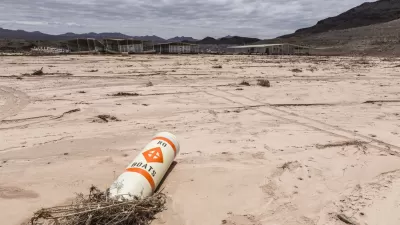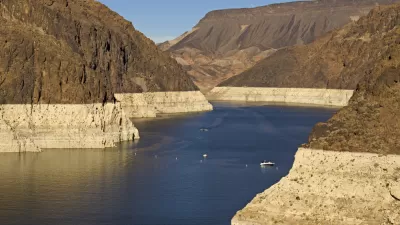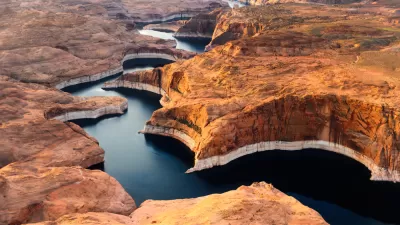Metro Phoenix has a lot to think about as Lake Mead water shortages become ever more likely. A three-state drought contingency plan may only be a temporary fix for a problem that'll divide cities and stakeholders.

Joanna Allhands discusses a likely future of tough decisions and water disputes for Phoenix as Lake Mead threatens to run dry. While a proposed drought contingency plan (DCP) won't jeopardize the city's primary supply of water, metro Phoenix cities also draw upon sources that may be affected in the event of a shortage.
Allhands writes, "Somewhat overlooked in the discussion is the impact to cities when a shortage is declared under DCP – likely because most of the water on which cities rely is high-priority water that would not be cut in a Tier 1 shortage, regardless of whether DCP is in place."
She goes on, "But metro Phoenix cities also have shares of what's called Non-Indian Agricultural (NIA) water, which is one rung higher on the priority ladder than the so-called Ag Pool water used by Pinal County farmers. That means if the drought contingency plan is approved, a portion of that NIA water would be cut when a Tier 1 shortage is declared [...]"
In the end, Allhands argues, any contingency plan that relies on Lake Mead's uncertain future water reserves is only a "Band-Aid" for a deeper problem, one that present Arizona cities with political questions—and even existential ones.
See also:
FULL STORY: A Lake Mead water shortage could affect metro Phoenix more than we think

Study: Maui’s Plan to Convert Vacation Rentals to Long-Term Housing Could Cause Nearly $1 Billion Economic Loss
The plan would reduce visitor accommodation by 25,% resulting in 1,900 jobs lost.

North Texas Transit Leaders Tout Benefits of TOD for Growing Region
At a summit focused on transit-oriented development, policymakers discussed how North Texas’ expanded light rail system can serve as a tool for economic growth.

Using Old Oil and Gas Wells for Green Energy Storage
Penn State researchers have found that repurposing abandoned oil and gas wells for geothermal-assisted compressed-air energy storage can boost efficiency, reduce environmental risks, and support clean energy and job transitions.

Private Donations Propel Early Restoration of Palisades Playground
Los Angeles has secured over $1.3 million in private funding to restore the Pacific Palisades playground months ahead of schedule, creating a modern, accessible space that supports community healing after recent wildfires.

From Blight to Benefit: Early Results From California’s Equitable Cleanup Program
The Equitable Community Revitalization Grant (ECRG) program is reshaping brownfield redevelopment by prioritizing projects in low-income and environmental justice communities, emphasizing equity, transparency, and community benefits.

Planting Relief: Tackling Las Vegas Heat One Tree at a Time
Nevada Plants, a Las Vegas-based nonprofit, is combating the city’s extreme urban heat by giving away trees to residents in underserved neighborhoods, promoting shade, sustainability, and community health.
Urban Design for Planners 1: Software Tools
This six-course series explores essential urban design concepts using open source software and equips planners with the tools they need to participate fully in the urban design process.
Planning for Universal Design
Learn the tools for implementing Universal Design in planning regulations.
Ascent Environmental
Borough of Carlisle
Institute for Housing and Urban Development Studies (IHS)
City of Grandview
Harvard GSD Executive Education
Toledo-Lucas County Plan Commissions
Salt Lake City
NYU Wagner Graduate School of Public Service





























